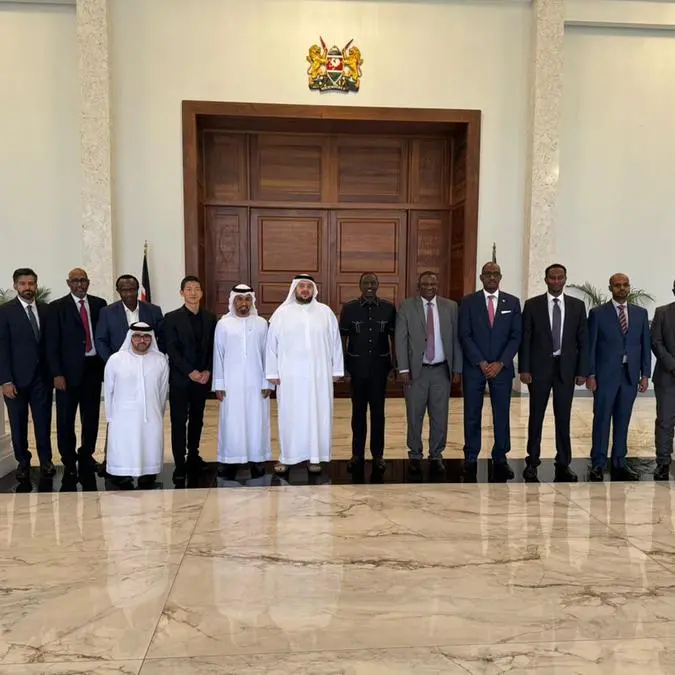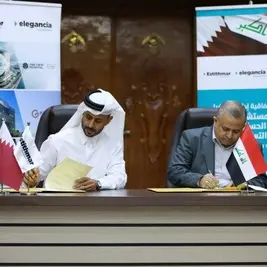Singapore: Moody's Investors Service ("Moody's") has today affirmed the long-term issuer and senior unsecured ratings of the Government of Abu Dhabi at Aa2. The outlook remains stable. Moody's has also affirmed the short-term issuer rating at P-1, and the long-term and short-term MTN programme ratings at (P)Aa2 and (P)P-1, respectively.
The affirmation of Abu Dhabi's Aa2 ratings is supported by Moody's expectations that the sovereign's fiscal strength will remain very high, with very low government debt and vast sovereign assets. Prospects for a medium-term increase in economic activity and revenue from the hydrocarbon sectors and reforms aimed at developing the non-oil sector also support the ratings.
The stable outlook indicates that the risks are broadly balanced, supported by current oil prices and upside potential from continuing diversification efforts, and constrained by lingering government-related entity contingent liabilities and geopolitical tensions.
RATINGS RATIONALE
RATIONALE FOR AFFIRMING THE Aa2 RATING
VERY HIGH FISCAL STRENGTH, WITH VERY LOW GOVERNMENT DEBT AND VAST SOVEREIGN WEALTH FUND ASSETS
Moody's expects Abu Dhabi's fiscal strength to remain very high, with very low government debt and vast financial assets.
Moody's estimates that Abu Dhabi's budget was close to balance in 2018. Over the medium-term, under the assumption that oil prices hover around the current levels, after a small deficit in 2020 the budget balance will likely move to a small surplus as Abu Dhabi increases hydrocarbon production in line with its investment plans. As a result, Moody's forecasts Abu Dhabi's debt/GDP to remain under 10% in the foreseeable future despite a likely shift in policy focus towards supporting the economy from fiscal consolidation.
After a period of fiscal restraint following the oil price shock, government spending has started to rise more rapidly. In addition to last year's easing of spending constraints, in May 2018 Abu Dhabi announced plans to implement a $13.6 billion (AED50 billion, around 5% of GDP) stimulus package ("Ghadan 21/Tomorrow 21") which will be spread over a period of three years, starting in 2019.
These relatively modest increases in spending have been matched by more significant increases in hydrocarbons revenues, predominantly due to higher oil prices but also by modest increases in production. Hydrocarbon revenues aside, the implementation of VAT in January 2018 has also
expanded the government's non-oil revenue base, although the disbursement of these receipts is pending agreement on the distribution formula among the Emirates, which collectively will receive 70% of VAT receipts.
Underpinning Abu Dhabi's very high fiscal strength is the government's exceptionally strong balance sheet, with assets under management at the Abu Dhabi Investment Authority (ADIA) that Moody's estimates at more than $590 billion as of 2018 far exceeding the total liabilities in the wider
public sector. As a result, Moody's assesses that the contingent liability risks posed by government-related entities (GREs) are modest in comparison to Abu Dhabi's sovereign wealth fund assets, and estimates that total GRE liabilities in the UAE amounted to around 28% of ADIA's assets.
FURTHER DEVELOPMENTS IN HYDROCARBONS AND REFORMS SUPPORTING THE NON-OIL ECONOMY POINT TO ROBUST GROWTH
The re-imposition of OPEC production cuts late last year has constrained the near-term outlook for hydrocarbons production in Abu Dhabi, although a ramp up in production just prior to the announcement of the cuts has resulted in a production allocation for 2019 which is slightly larger
than last year's production, meaning that Moody's expects hydrocarbon real GDP will still post a positive contribution to growth.
Notwithstanding these near-term production constraints, Abu Dhabi National Oil Company (ADNOC) has announced $132 billion of new investment plans in downstream and upstream sectors. If fully executed these investments will lift daily production capacity by to 4 million barrels per day by 2020, compared to production levels of around 3 mbpd in 2018, supporting both economic activity and government revenues. Around $45 billion of this investment will flow into the downstream sector to support the development of ADNOC's refining and petrochemicals capacity, an important sector for Abu Dhabi's economic diversification efforts. Recent initiatives to tap Abu Dhabi's sour gas reserves will also eventually reduce the sovereign's reliance on imports of gas from Qatar (Aa3 stable) as they start to come online from 2025 onwards.
Moreover, in response to the weaker growth environment of the last few years, the government's focus has shifted away from fiscal consolidation towards economic reforms which Moody's expects willgradually support the development of the non-oil sector although Abu Dhabi's economy will
continue to be dominated by the hydrocarbon sector for the foreseeable future.
The government measures include a number of changes at the federal levelto the investment and visa frameworks, aimed at facilitating inwards investment. The Foreign Direct Investment law came into force in September 2018, which provides the UAE Cabinet with the ability to remove the 49% ownership restriction for foreign onshore investment in selected sectors of the economy. Changes to the UAE's visa framework to provide long-term (five and 10 year residency visas) for investors as well as to key specialist professionals and exceptional students came into effect in March 2019. To the extent that these visa changes reduce fluctuations in the expatriate population they will support demand for residential real estate and domestic economic activity in general.
RATIONALE FOR THE STABLE OUTLOOK
The stable outlook indicates that the risks to the ratings are broadly balanced.
Fluctuations in oil prices will continue to affect Abu Dhabi's fiscal
metrics but unless oil prices depart significantly and durably from
Moody's assumption that prices will hover around the current levels, the
credit implications of such changes in prices will be limited.
Over the longer term, effective implementation of the government's plans
would foster increasing diversification of economic activity, allowing
the government to broaden its revenue base and limiting the need for
government support to the economy during periods of lower oil prices.
Downside risks relate to a potential significant worsening in the
financial health of GREs leading to large financial support from
government of Abu Dhabi. Moreover, geopolitical risks -- primarily
relating to regional tensions with Iran, including through the war in
Yemen -- remain a source of low-likelihood but potentially high impact
downside risk should an escalation lead to disruptions, for example
through the Strait of Hormuz, that affect the whole region. However, the
UAE's Habshan-Fujairah pipeline mitigates the impact of this risk
compared to some other GCC sovereigns.
WHAT COULD TAKE THE RATING UP/DOWN
Although the threshold for an upgrade is high at this rating level,
prospects of significant diversification of economic activity from
hydrocarbons and an associated decline in the government's dependence on
hydrocarbons revenues would likely prompt an upgrade of Abu Dhabi's
rating. A more positive assessment of Abu Dhabi's creditworthiness would
also involve greater transparency over fiscal policy and the size and
composition of government assets, and declining contingent liability
risks from GREs.
Conversely, a prolonged period of oil prices well below Moody's current
assumptions would likely prompt a rating downgrade if not accompanied by
effective measures to preserve the government's fiscal strength. A rising
probability that large contingent liabilities posed by government-related
entities may crystallise on the government's balance sheet would also
likely prompt Moody's to downgrade the rating.
GDP per capita (PPP basis, US$): 127,679 (2017 Actual) (also known as Per
Capita Income)
Real GDP growth (% change): -0.5% (2017 Actual) (also known as GDP Growth)
Inflation Rate (CPI, % change Dec/Dec): 1.2% (2018 Actual)
Gen. Gov. Financial Balance/GDP: -4.1% (2017 Actual) (also known as
Fiscal Balance)
Level of economic development: Very High level of economic resilience
Default history: No default events (on bonds or loans) have been recorded
since 1983.
On 20 March 2019, a rating committee was called to discuss the rating of
the Abu Dhabi, Government of. The main points raised during the
discussion were: The issuer's economic fundamentals, including its
economic strength, have not materially changed. The issuer's
institutional strength/ framework, have not materially changed. The
issuer's fiscal or financial strength, including its debt profile, has
not materially changed.
The principal methodology used in these ratings was Sovereign Bond Ratings
published in November 2018. Please see the Rating Methodologies page on
www.moodys.com for a copy of this methodology.
The weighting of all rating factors is described in the methodology used
in this credit rating action, if applicable.
The local market analyst for this rating is Thaddeus Best, +971 (423)
795-06 .
REGULATORY DISCLOSURES
For ratings issued on a program, series or category/class of debt, this
announcement provides certain regulatory disclosures in relation to each
rating of a subsequently issued bond or note of the same series or
category/class of debt or pursuant to a program for which the ratings are
derived exclusively from existing ratings in accordance with Moody's
rating practices. For ratings issued on a support provider, this
announcement provides certain regulatory disclosures in relation to the
credit rating action on the support provider and in relation to each
particular credit rating action for securities that derive their credit
ratings from the support provider's credit rating. For provisional
ratings, this announcement provides certain regulatory disclosures in
relation to the provisional rating assigned, and in relation to a
definitive rating that may be assigned subsequent to the final issuance
of the debt, in each case where the transaction structure and terms have
not changed prior to the assignment of the definitive rating in a manner
that would have affected the rating. For further information please see
the ratings tab on the issuer/entity page for the respective issuer on
www.moodys.com.
For any affected securities or rated entities receiving direct credit
support from the primary entity(ies) of this credit rating action, and
whose ratings may change as a result of this credit rating action, the
associated regulatory disclosures will be those of the guarantor entity.
Exceptions to this approach exist for the following disclosures, if
applicable to jurisdiction: Ancillary Services, Disclosure to rated
entity, Disclosure from rated entity.
Regulatory disclosures contained in this press release apply to the credit
rating and, if applicable, the related rating outlook or rating review.
Please see www.moodys.com for any updates on changes to
the lead rating analyst and to the Moody's legal entity that has issued
the rating.
Please see the ratings tab on the issuer/entity page on www.moodys.com
for additional regulatory disclosures for each credit rating.
Christian de Guzman
VP - Senior Credit Officer
Sovereign Risk Group
Moody's Investors Service Singapore Pte. Ltd.
50 Raffles Place #23-06
Singapore Land Tower
Singapore 48623
Singapore
JOURNALISTS: 852 3758 1350
Client Service: 852 3551 3077
Marie Diron
MD - Sovereign Risk
Sovereign Risk Group
JOURNALISTS: 852 3758 1350
Client Service: 852 3551 3077
Releasing Office:
Moody's Investors Service Singapore Pte. Ltd.
50 Raffles Place #23-06
Singapore Land Tower
Singapore 48623
Singapore
JOURNALISTS: 852 3758 1350
Client Service: 852 3551 3077
© 2019 Moody's Corporation, Moody's Investors Service,
Inc., Moody's Analytics, Inc. and/or their
licensors and affiliates (collectively, "MOODY'S").
All rights reserved.
Disclaimer: The contents of this press release was provided from an external third party provider. This website is not responsible for, and does not control, such external content. This content is provided on an “as is” and “as available” basis and has not been edited in any way. Neither this website nor our affiliates guarantee the accuracy of or endorse the views or opinions expressed in this press release.
The press release is provided for informational purposes only. The content does not provide tax, legal or investment advice or opinion regarding the suitability, value or profitability of any particular security, portfolio or investment strategy. Neither this website nor our affiliates shall be liable for any errors or inaccuracies in the content, or for any actions taken by you in reliance thereon. You expressly agree that your use of the information within this article is at your sole risk.
To the fullest extent permitted by applicable law, this website, its parent company, its subsidiaries, its affiliates and the respective shareholders, directors, officers, employees, agents, advertisers, content providers and licensors will not be liable (jointly or severally) to you for any direct, indirect, consequential, special, incidental, punitive or exemplary damages, including without limitation, lost profits, lost savings and lost revenues, whether in negligence, tort, contract or any other theory of liability, even if the parties have been advised of the possibility or could have foreseen any such damages.










